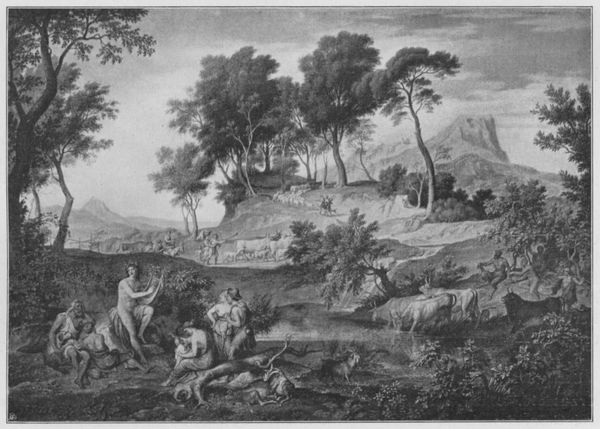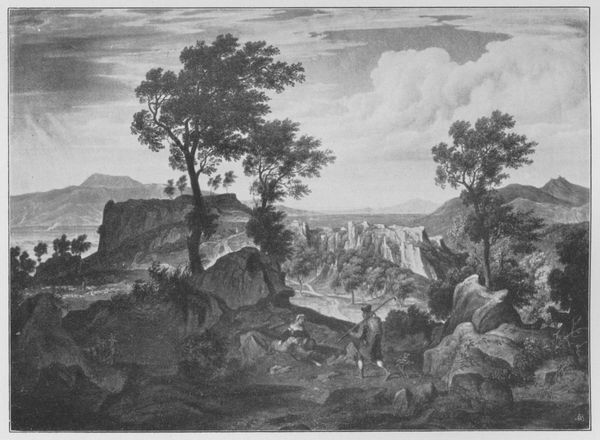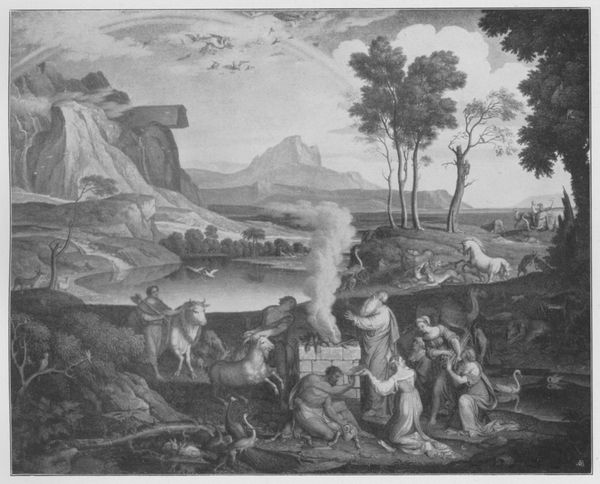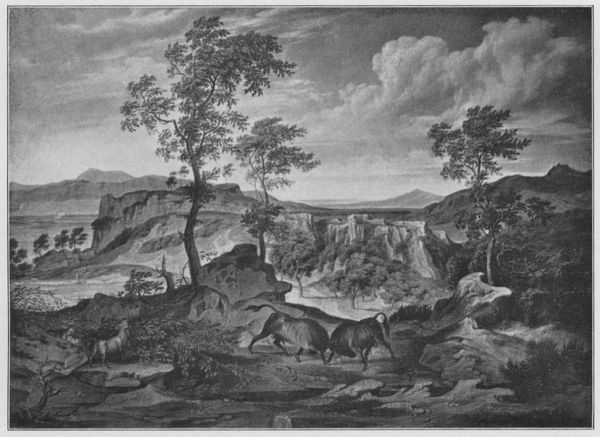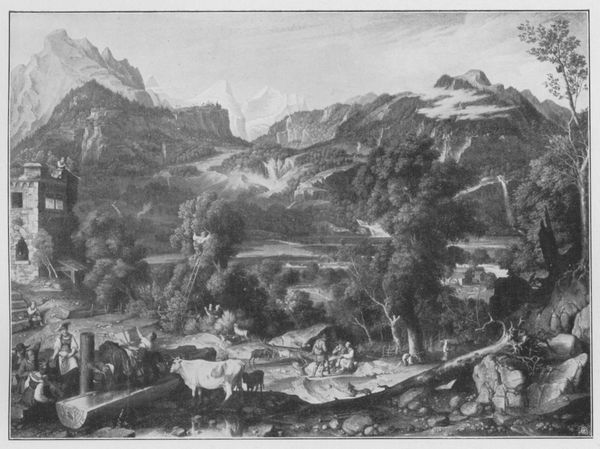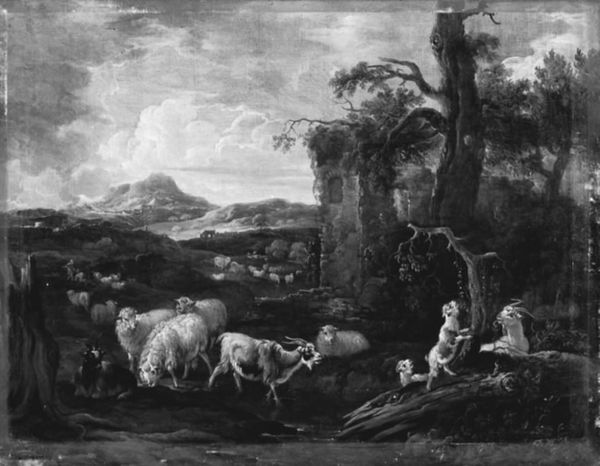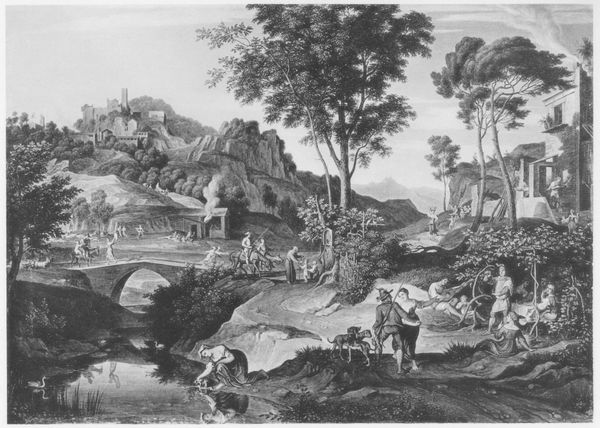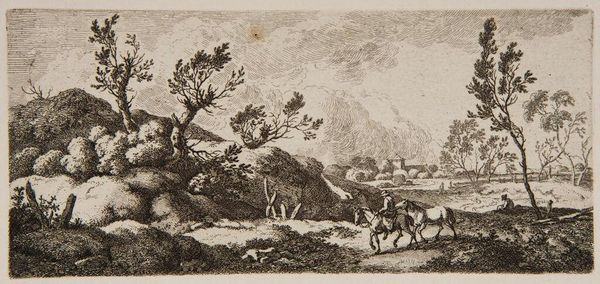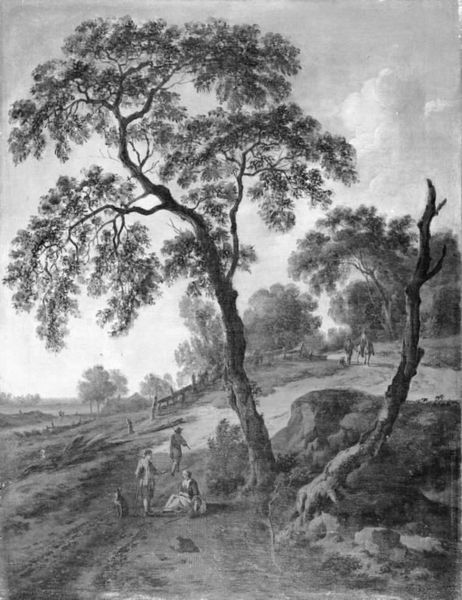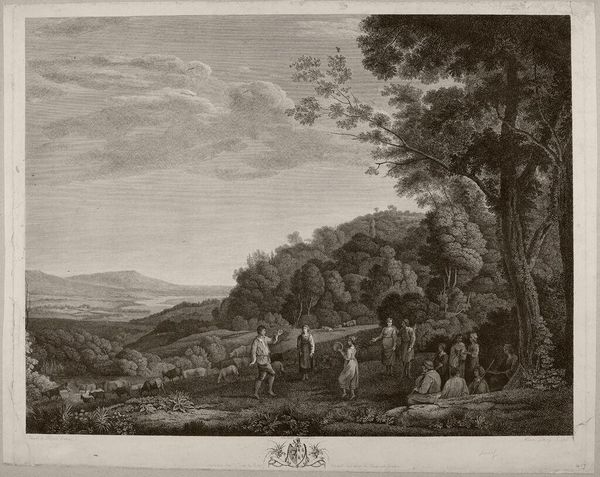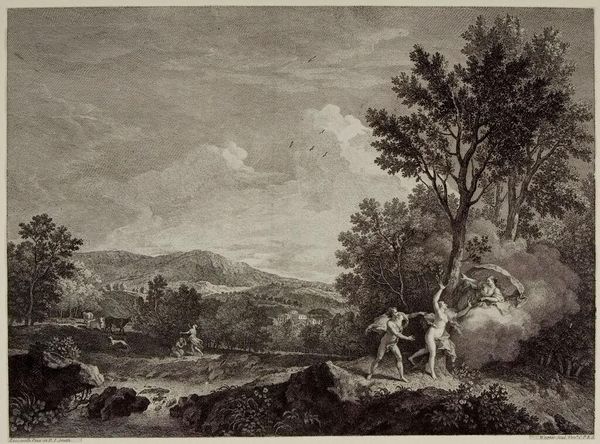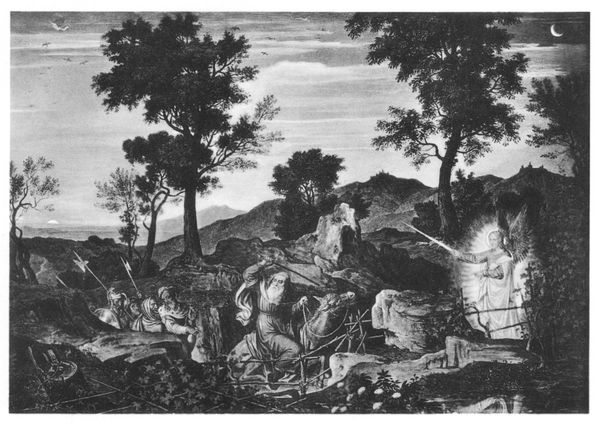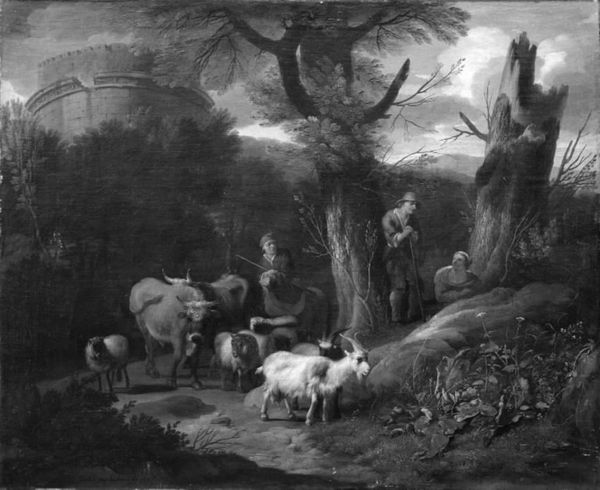
drawing, print, engraving
#
drawing
# print
#
landscape
#
figuration
#
romanticism
#
black and white
#
monochrome photography
#
history-painting
#
monochrome
#
engraving
#
monochrome
Dimensions: 141 x 105 cm
Copyright: Public domain
Curator: "Ruth Auf Dem Acker Des Boas," or "Ruth in the Field of Boaz," is an engraving by Joseph Anton Koch. I’m immediately struck by its serene and idyllic quality despite being rendered in monochrome. What stands out to you? Editor: I'm interested in the depiction of labor here. Look at the physical exertion conveyed in the harvesters bent low in the field. And yet, that labor unfolds in the shadow of what appears to be an almost mythical or classical landscape. How interesting that Koch would merge those worlds. Curator: Absolutely. Koch is clearly referencing the biblical story of Ruth, known for its themes of loyalty and redemption, but the imagery also carries heavy symbolic weight. The posture of Ruth kneeling could signify supplication, reverence, but also her lower status at the time. Editor: The act of gleaning is really the hinge here—a system in place that enabled poor people access to the means of subsistence, a sort of safety net rooted in agricultural production. How often do we stop to think about labor and class in this seemingly timeless, pastoral scene? It asks us to consider social structures that are maybe invisible on first glance. Curator: And notice how Ruth is placed between Boaz, gesturing towards her, and the workers actively harvesting. She is caught between a future of potential protection and her current reality of toil. It reminds me that such narratives were employed in Romanticism as expressions of longing and a simpler past, albeit through a religious lens. Editor: Right, Romanticism often mythologized peasant life and agricultural practices, but from a safe distance. I think understanding how the printmaking process functions too would be critical, because we know the reproductive nature of the print participates within economies of exchange as well, circulating both the narrative and the image across different strata of society. Curator: It adds another layer to our reading, doesn't it? By exploring these intertwining contexts of labor, material practice, and symbol, we can glean much richer meanings from the landscape depicted. Editor: Precisely. There’s a density to what might appear as simple devotional imagery.
Comments
No comments
Be the first to comment and join the conversation on the ultimate creative platform.
